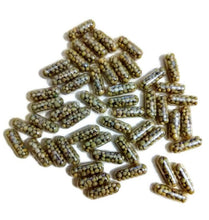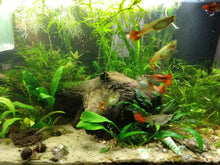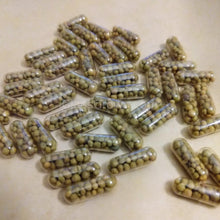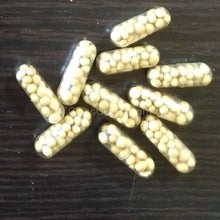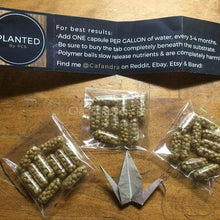
| "I've had them in my tank for about 2 weeks, I'm noticing improvements! They came very quickly, too. If you're going to add them to your tank, just make sure you bury them quickly, the capsule part dissolves fast when it gets wet. Overall, the root tabs seem to be working out pretty well, I plan on getting more in the future!"
-Colleen W. Via Etsy |
Keep your aquatic plants healthy and thriving with our convenient Root Fertilizer Tabs. These size 0 dissolving gelatin capsules are designed to be placed under the roots of your plants every three months, providing a slow release of Osmocote Plus fertilizer granules to help support their growth.
Our Root Fertilizer Tabs are easy to use and completely safe for both shrimp and fish, making them a great choice for any aquarium setup. Simply place the tab under the roots of your plants (or every three inches under the substrate), and watch as they grow stronger and more vibrant over time.
Our Root Fertilizer Tabs are a hassle-free way to ensure that your aquatic plants get the nutrients they need to thrive. Grab yours today and take the first step towards a healthier, more beautiful aquarium!
These root fertilizer capsules are great for your deeper root feeder Aquarium plants such as Crypts, Swords, and Bulbs like Lilies or Aponogetons.
Bury one every three inches, one per plant. (One tab per gallon of tank water is a good measure too!)
They are slow release, so you only really need one per plant every 3-6 months. They get your plants the nutrients they crave, when they need them.
These are shrimp/ fish safe. If your loaches or catfish accidentally dig them up, no worries! Just carefully bury them back down a little deeper.
As a good estimate, I've included a picture of one of my small living room tanks.
This is a ten gallon low tech tank, heavily planted (as you can see :P), and is stocked with a Red Cobra Guppy, and red Cherry shrimp colony. I have no heat or CO2 and very average LED cheapo Amazon lights on the top.
30 root tabs is a year's supply for this tank.
(I add ten into the substrate three times a year)







